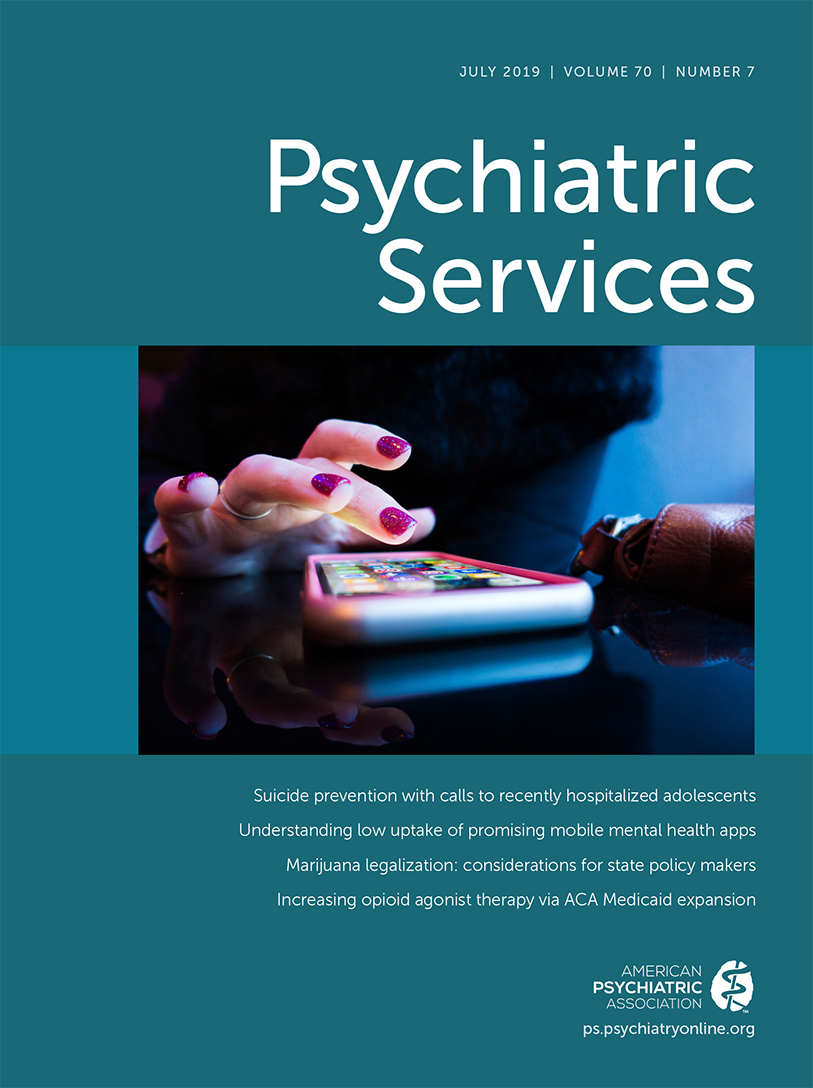Investing in Medicaid to End the Opioid Epidemic
Mojtabai and colleagues (1) have contributed important evidence on the impact of Medicaid expansion on the addiction treatment system. Clinical guidelines recommend Food and Drug Administration–approved treatment (e.g., opioid agonist therapy [OAT] or injectable naltrexone) as first-line treatment for people with opioid use disorder, but many do not receive it. Mojtabai et al. document that Medicaid expansion can help fill this gap in care. Their findings highlight Medicaid’s capacity to increase not only access to care but also the odds that such care will comprise evidence-based services, such as OAT with methadone or buprenorphine. A recent study by Meinhofer and Witman found that expansion prompted existing providers of OAT to serve more Medicaid patients and encouraged new providers to begin offering OAT. Given that OAT reduces illicit opioid use, crime, high-risk injection practices, and mortality, this finding represents a significant achievement of the Affordable Care Act.
Further augmenting Medicaid is essential for mounting an effective response to the opioid epidemic. Medicaid is the largest payer of addiction treatment in the United States, financing an estimated $12 billion in treatment services annually—more than five times the annual funding provided by the federal Substance Abuse Prevention and Treatment Block Grant and the grants recently appropriated under the SUPPORT Act. Medicaid’s growing role in financing treatment means that the traditional system of care—heavily reliant on state and federal set-asides, which are segregated from mainstream health care financing and impose inconsistent care quality standards—is becoming ob-solete. State Medicaid agencies now have enormous purchasing power, and they should use it to improve the treatment system’s response to the opioid epidemic. For example, state Medicaid agencies can require treatment providers to use licensed professionals to deliver evidence-based care as a condition of certification and reimbursement. States can also leverage Medicaid to enhance community-based infrastructure for treatment and recovery support—particularly within mainstream medical care settings. Vermont and Maryland have been frontrunners in this regard, using the Medicaid health home model to leverage enhanced federal matching funds to develop a coordinated system of care for enrollees with opioid use disorder.
Even in states in which Medicaid expansion is politically difficult to achieve, state Medicaid agencies can still pursue targeted expansions with Section 1115 demonstration waivers. Addiction was disallowed as a qualifying condition for Medicaid through Supplemental Security Income under the Contract With America Advancement Act of 1996. However, states can still expand coverage for populations at high risk of opioid use disorder and overdose. Given the success of the Medicaid expansion in increasing access to OAT, such coverage expansions have the potential to save lives.
Fully realizing Medicaid’s potential to respond to the opioid epidemic will also require state Medicaid agencies to expand benefits for addiction treatment. More generous Medicaid benefits have been linked to broader acceptance of Medicaid among treatment providers and higher treatment admissions covered by Medicaid. However, our research from the Nation-al Drug Abuse Treatment System Survey suggests that many states do not cover the full continuum of treatment services recommended in the American Society for Addiction Medicine criteria. In 2017, 10 states lacked coverage for methadone, 14 lacked coverage for residential treatment, and 24 lacked coverage for recovery support services. Restrictions on benefits also matter, influencing the choices of providers as well as pa-tients. For example, addiction treatment providers located in states that required prior authorization for buprenorphine have 50% lower odds of offering the medication. Without access to a provider who offers OAT, coverage will be of little help to newly insured enrollees seeking to receive it.
With greater resources come greater responsibility to monitor quality within the addiction treatment system. State Medicaid agencies’ utilization management policies must strike a careful balance between preventing inappropriate prescribing of OAT and ensuring access to OAT for people who need it to recover. OAT is often the best treatment option for people with opioid use disorder, but some people refuse it, others have contraindications to it, and still others have poor outcomes with it. Clinical guidelines must account for diverse patient needs, and Medicaid treatment benefits and utilization management protocols must be flexible enough to support the full range of appropriate clinical practice. Research to inform coverage and regulatory policy can assist state Medicaid agencies in strengthening the response to the opioid epidemic on a national scale.
1 : The Affordable Care Act and opioid agonist therapy for opioid use disorder. Psychiatric Services 2019; 70:617–620Link, Google Scholar



